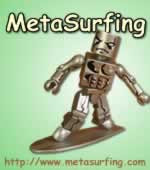Friday, December 11, 2009
Google demonstrates quantum computer image search - tech - 11 December 2009 - New Scientist
Google's web services may be considered cutting edge, but they run in warehouses filled with conventional computers. Now the search giant has revealed it is investigating the use of quantum computers to run its next generation of faster applications.
Writing on Google's research blog this week, Hartmut Neven, head of its image recognition team, reveals that the Californian firm has for three years been quietly developing a quantum computer that can identify particular objects in a database of stills or video.
Google has been doing this, Neven says, with D-Wave, a Canadian firm that has developed an on-chip array of quantum bits – or qubits – encoded in magnetically coupled superconducting loops.
The team set themselves the challenge of writing an algorithm for the chip that could learn to recognise cars in photos, and reported at the Neural Information Processing Systems conference in Vancouver, Canada, this week that they have succeeded.
Using 20,000 photographs of street scenes, half of which contained cars and half of which didn't, they trained the algorithm to recognise what cars look like by hand-labelling all the cars with boxes drawn around them.
After that training, the algorithm was set loose on a second set of 20,000 photos, again with half containing cars. It sorted the images with cars from those without faster than an algorithm on a conventional computer could – faster than anything running in a Google data centre today, Neven says.
Classical computers use what is known as a von Neumann architecture, in which data is fetched from memory and processed according to rules defined in a program to generate results that are stored. It is pretty much a sequential process, though multiple versions of it can run in parallel to speed things up a little.
Quantum computers, however, promise much faster processing, by exploiting the principle of quantum superposition: that a particle such as an ion, electron or photon can be in two different states at the same time. While each basic "bit" of data in a conventional computer can be either a 1 or a 0 at any one time, a qubit can be both at once.
Tuesday, December 08, 2009
Quantum Man - Wikipedia, the free encyclopedia

Quantum Man is a modern sculpture created by Julian Voss-Andreae, which is located in the City of Moses Lake, Washington[1].
Drawing inspiration from Voss-Andreae's background in physics[2], “Quantum Man” is the image of a walking man seen as a quantum object. Made up of over a hundred vertically oriented steel sheets, the 8’ (2.50 m) tall sculpture provides a metaphor for the counter-intuitive world of quantum physics. Symbolizing the dual nature of matter, the sculpture seems to consist of solid steel when seen from the front but nearly disappears when seen from the side, as light shines through the spaces between the slabs[3].
In 2007, Voss-Andreae created a second version called "Quantum Man 2" in stainless steel[4].
Mind-Machine Breakthrough: People Type With Just Thoughts
By focusing on images of letters, people with electrodes in their brains can type with just their minds, scientists now reveal.
These findings make up one more step on the road to mind-machine interfaces that may one day help people communicate with just their thoughts. Researchers have recently employed brain scans to see numbers and maybe even pull videos from inside people's heads.
The neuroscientists were monitoring two patients with epilepsy for seizure activity with electrodes placed directly on the surface of their brains to record electrical activity generated by the firing of nerve cells. This kind of procedure requires a craniotomy, a surgical incision into the skull.
How it works
Lead investigator Jerry Shih, a neurologist at the Mayo Clinic campus in Jacksonville, Fla., wanted to test how well their fledgling mind-machine interface functioned in these patients. He reasoned it would perform better when electrodes were placed directly on the brain instead of when placed on the scalp, as is done with electroencephalography, or EEG.
(...)
After the system was calibrated to each patient's specific brain waves, when the patient focused on a letter, the letter appeared on the screen.
"We were able to consistently predict the desired letters for our patients at or near 100 percent accuracy," Shih said. "While this is comparable to other researchers' results with EEGs, this approach is more localized and can potentially provide a faster communication rate. Our goal is to find a way to effectively and consistently use a patient's brain waves to perform certain tasks."
Tuesday, December 01, 2009
Sharp shows plant with no workers on the floor
SAKAI, Japan — Huge sheets of glass are guided by robotic arms, sliding and turning in a towering germ-free plant, the world's first making giant "10th generation" panels for flat screen TVs.
Japanese electronics maker Sharp Corp.'s futuristic-looking plant doesn't have a single worker on the floor. Each sheet, measuring about 3 meters (3.3 yards) by 3 meters, is being made and tested by computerized machines.
/ AP
In this undated photo released by Sharp Corp., interior of the firm's factory is seen in Sakai, western Japan. Japanese electronics maker Sharp Corp.'s futuristic-looking plant doesn't have a single worker on the floor. Each sheet of glass, measuring about 3 meters (3.3 yards) by 3 meters, used for flat screen TVs, is being made and tested by computerized machines. (AP Photo/Sharp Corp)

